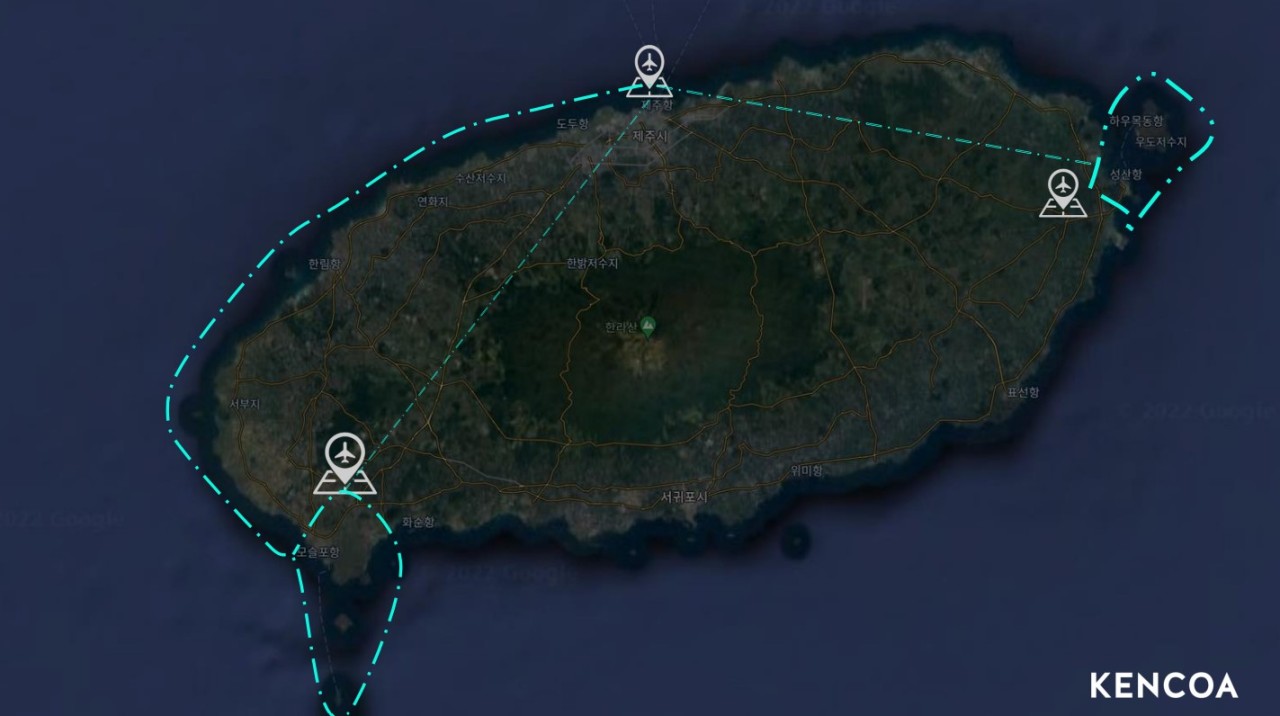
South Korea’s Jeju Island is preparing to introduce air taxi service by 2025, a first step in the popular tourist destination’s plans to make urban air mobility (UAM) services a routine transport option around the vacation hot spot.
Plans to roll out air taxi and future UAM services were reported by The Korean Herald, which detailed initial operations using coastal routes between three heavily frequented locations on Jeju. Administrated as a Special Self-Governing Province, Jeju wants to become the first region of South Korea to introduce electric next-generation air transport.
The project involves local authorities, South Korean aviation company Kencoa Aerospace, and the Jeju Free International City Development Center (JDC).
Read: Skyports and Kencoa partner up to create drone delivery service on Korea’s Jeju island
The first route in the island’s planned UAM network will operate air taxis between Jeju International Airport on the central north shore to Moseulpo on its southwest tip; from there, travelers can take short hops to the small islands of Moseulpo, Gapado, and Marado. The third route is a northeastern curve to Seongsan Ilchulbong, also known also known as Sunrise Peak.
The project also calls for building vertiports to facilitate takeoff and landing of UAM craft, as well as new hotels to accommodate the rising levels of visitors expected by officials involved in Jeju’s air taxi project.
“This would allow tourists to hop on the electric vertical take-off and landing aircraft at Jeju airport to directly land at tourist spots and transfer to drone taxis nearby,” Kencoa Aerospace Executive Chung Chan-young told The Korean Herald. “The time frame would be around 2025.”
Relying primarily on coast-hugging routes will doubtless offer UAM travelers spectacular Jeju views as they look out from speeding air taxis, but that longer distance decision was largely one of pragmatism based on outside factors.
Efforts to launch South Korea’s first air taxi services between Gimpo International Airport central Seoul locations hit a snag recently, when relocation of the presidential office and other developments thrust no-fly zones into planned routes.
Read: Volocopter flies South Korea’s first public crewed air taxi trial
Though it’s very unlikely those kinds of unexpected surprises would arise in planning new UAM services on Jeju, Chung says his partners are erring to the safe side in choosing initial air taxi routes.
“Flying a UAM aircraft through the coast in the island faces less trouble compared to running an air taxi in Seoul, where flying drones or aircraft in areas like Yongsan is heavily restricted by government regulations,” said Chung. “Jeju works as a perfect test bed and the best location to leverage UAM for the area’s advantages. Examining geographical features through the coastline is less complicated, and establishing a vertiport on the sea can also work.”
Image: Kencoa
FTC: We use income earning auto affiliate links. More.



Comments